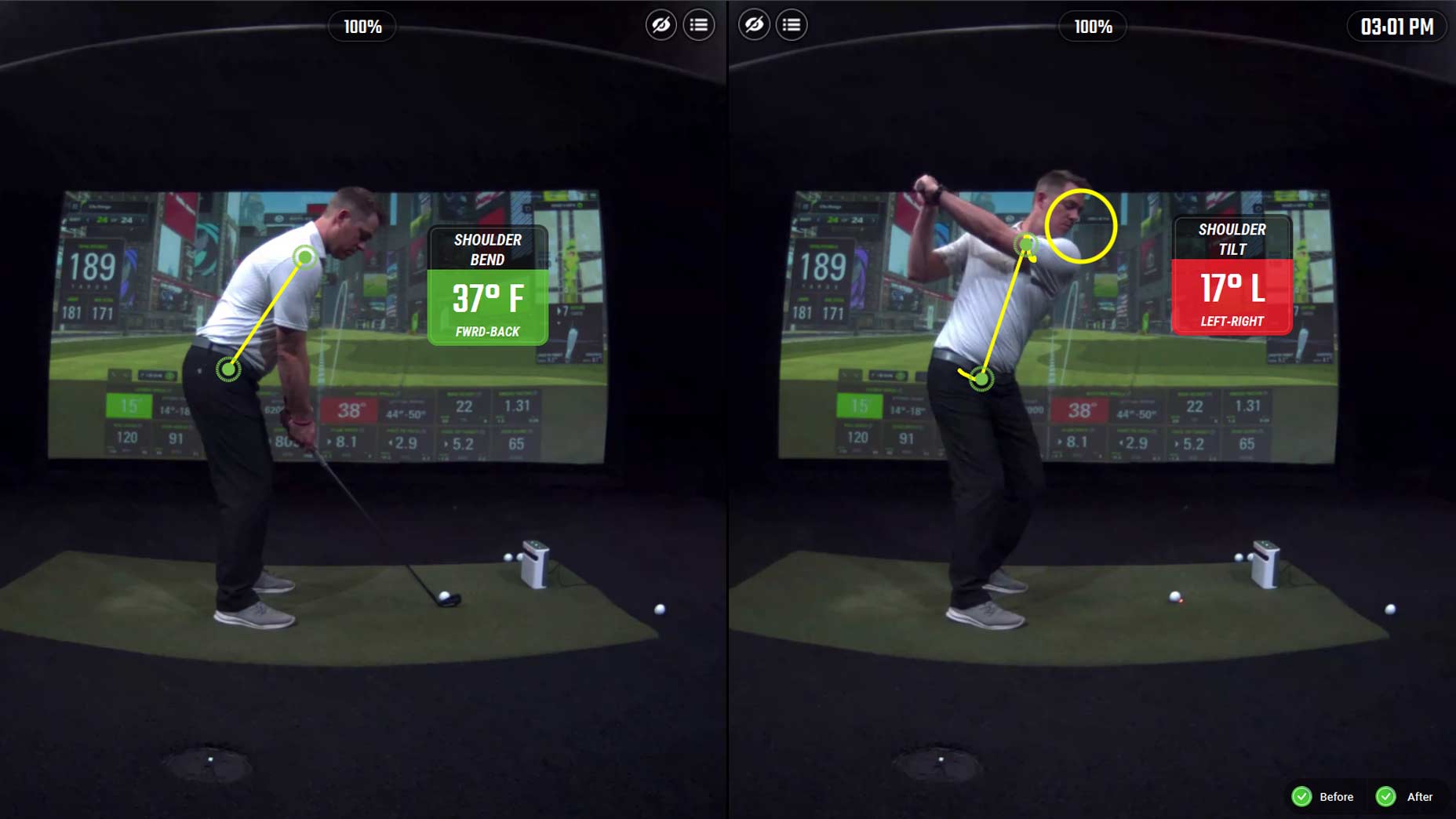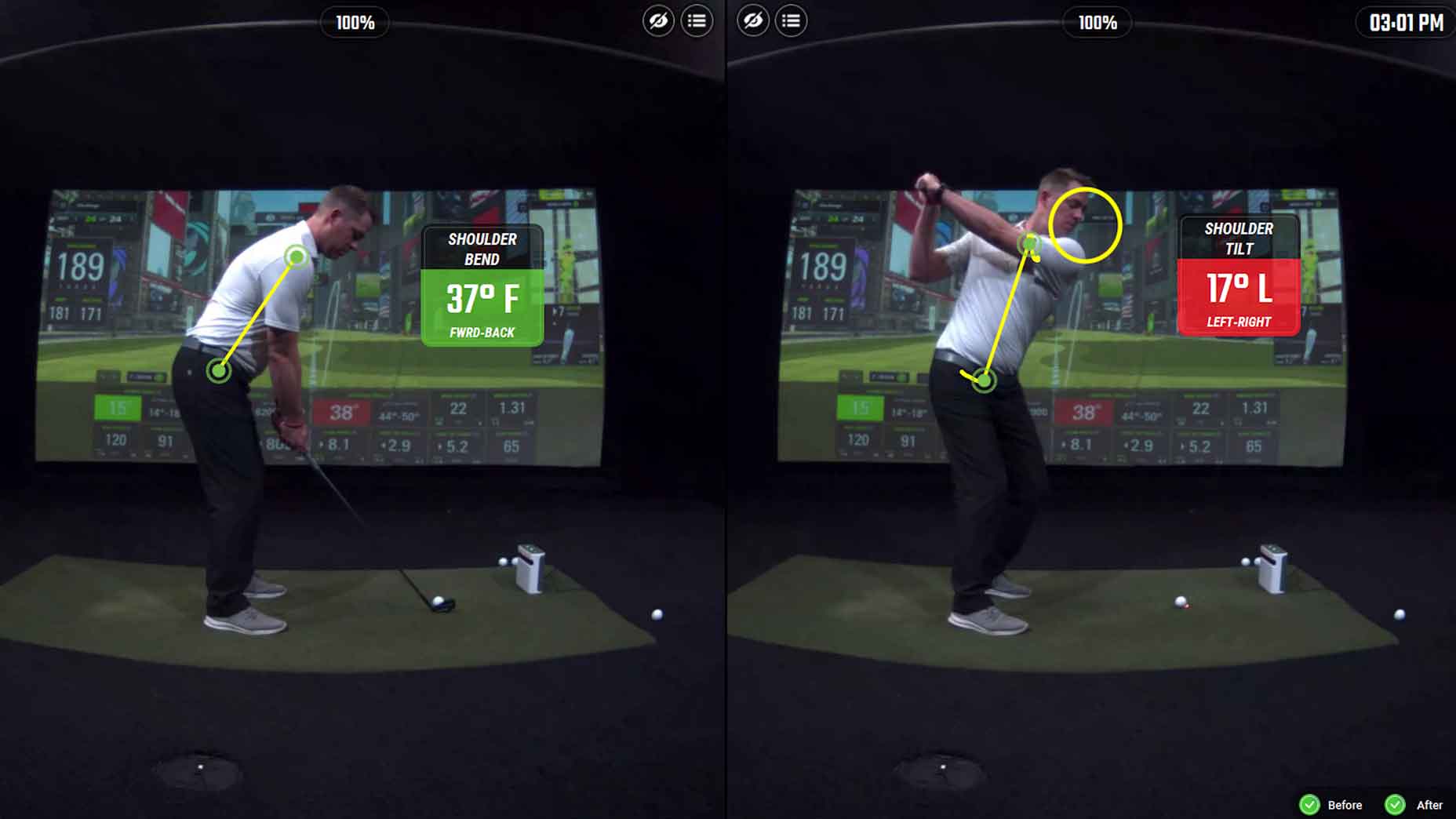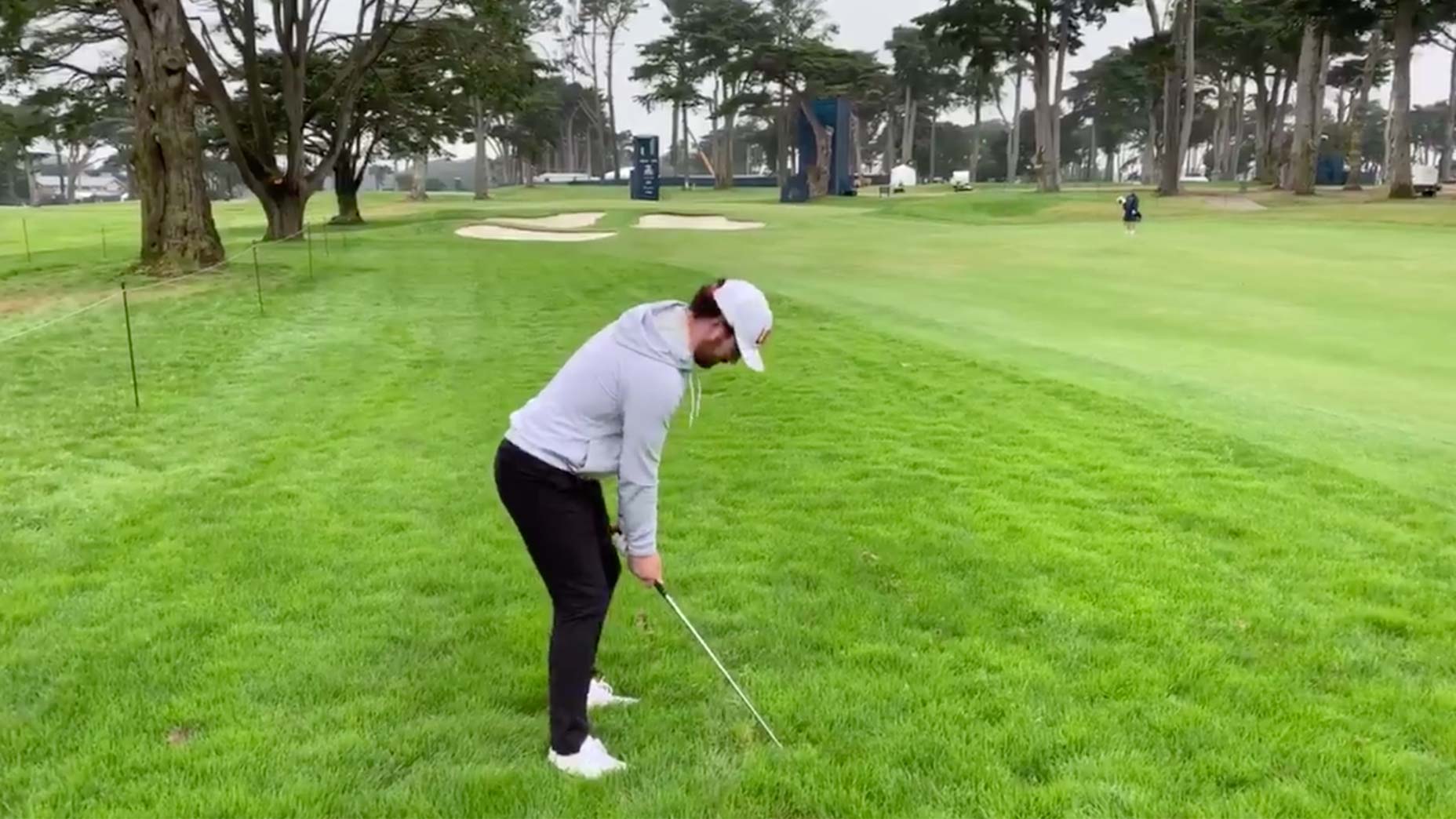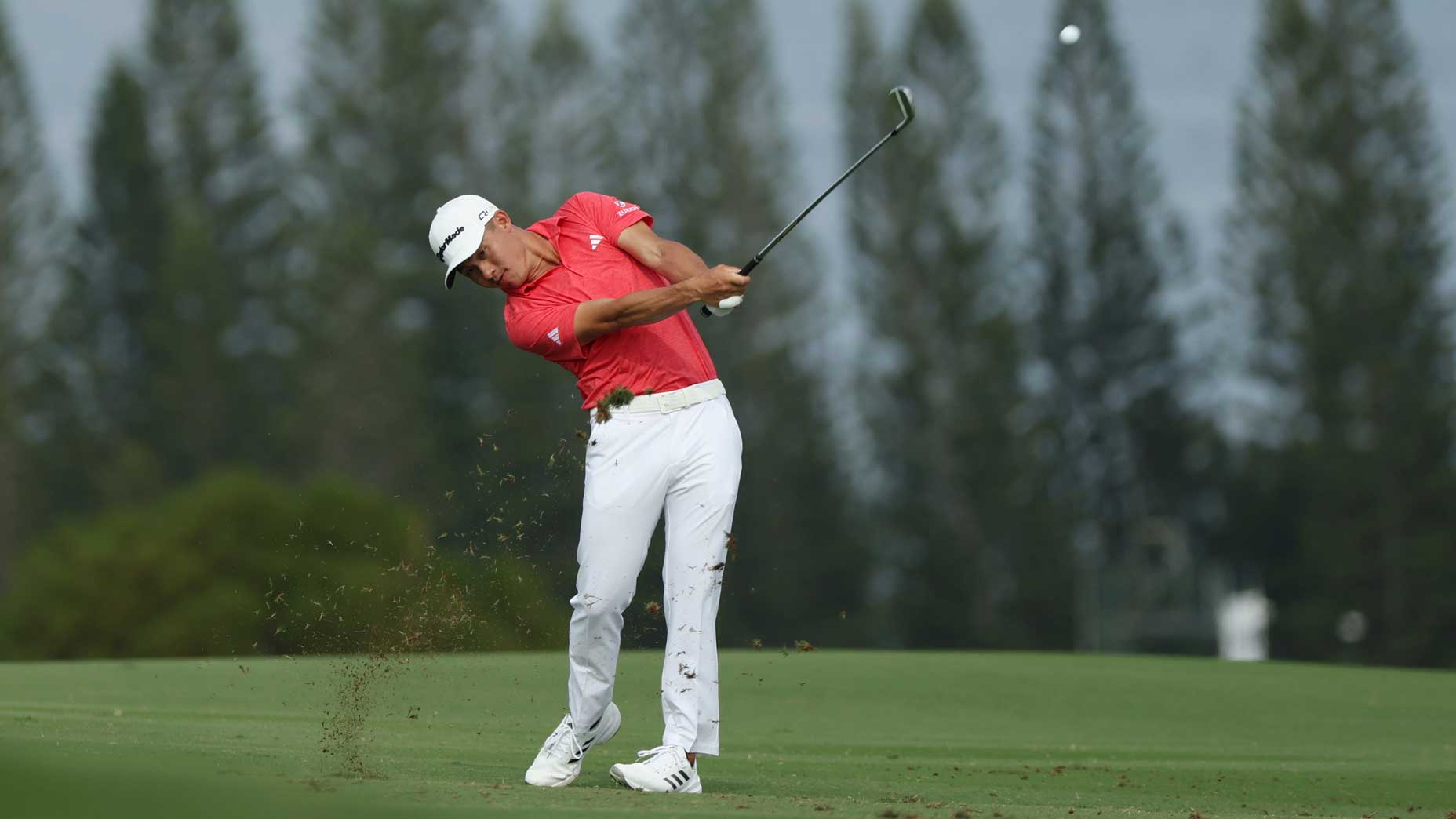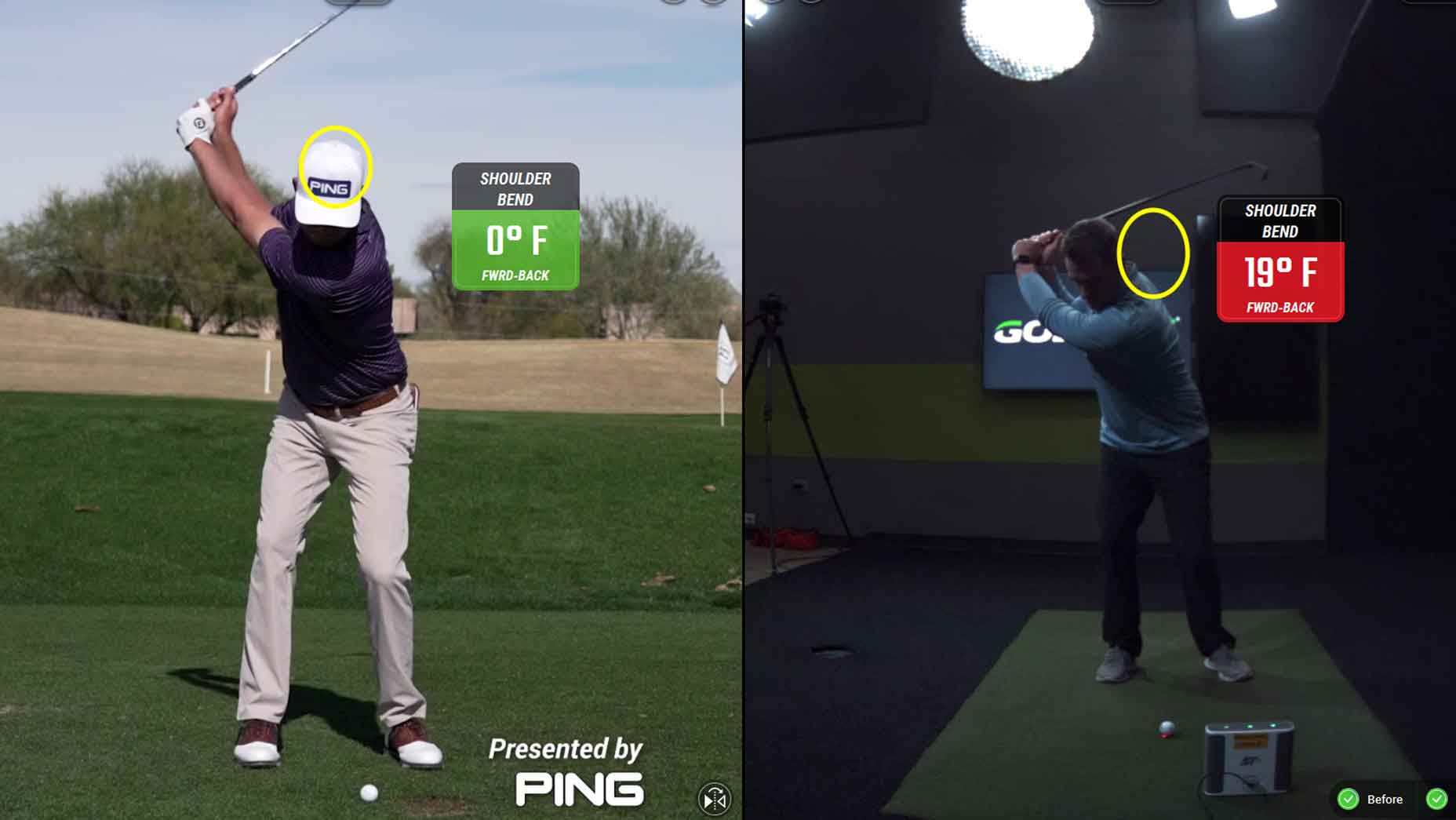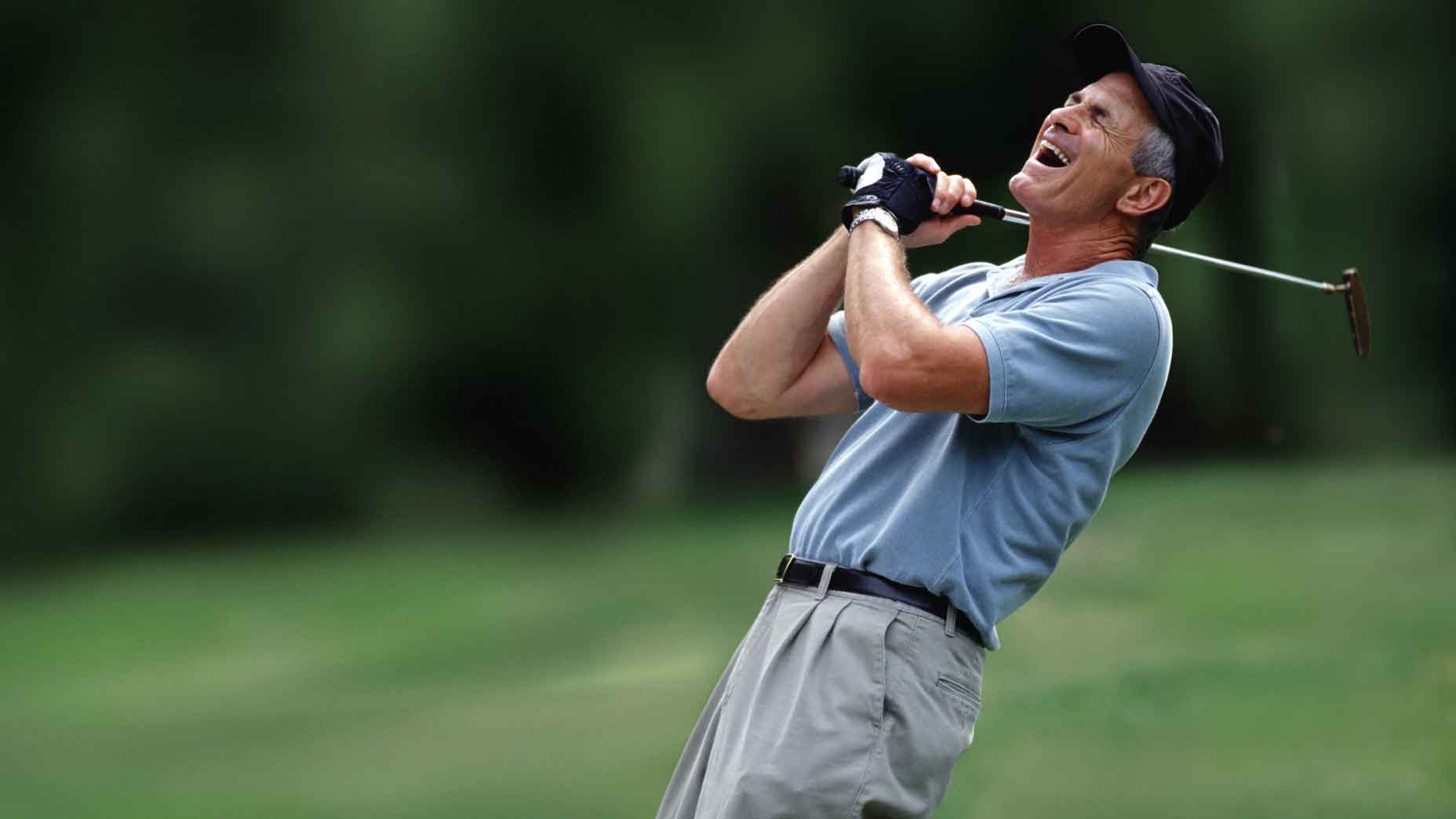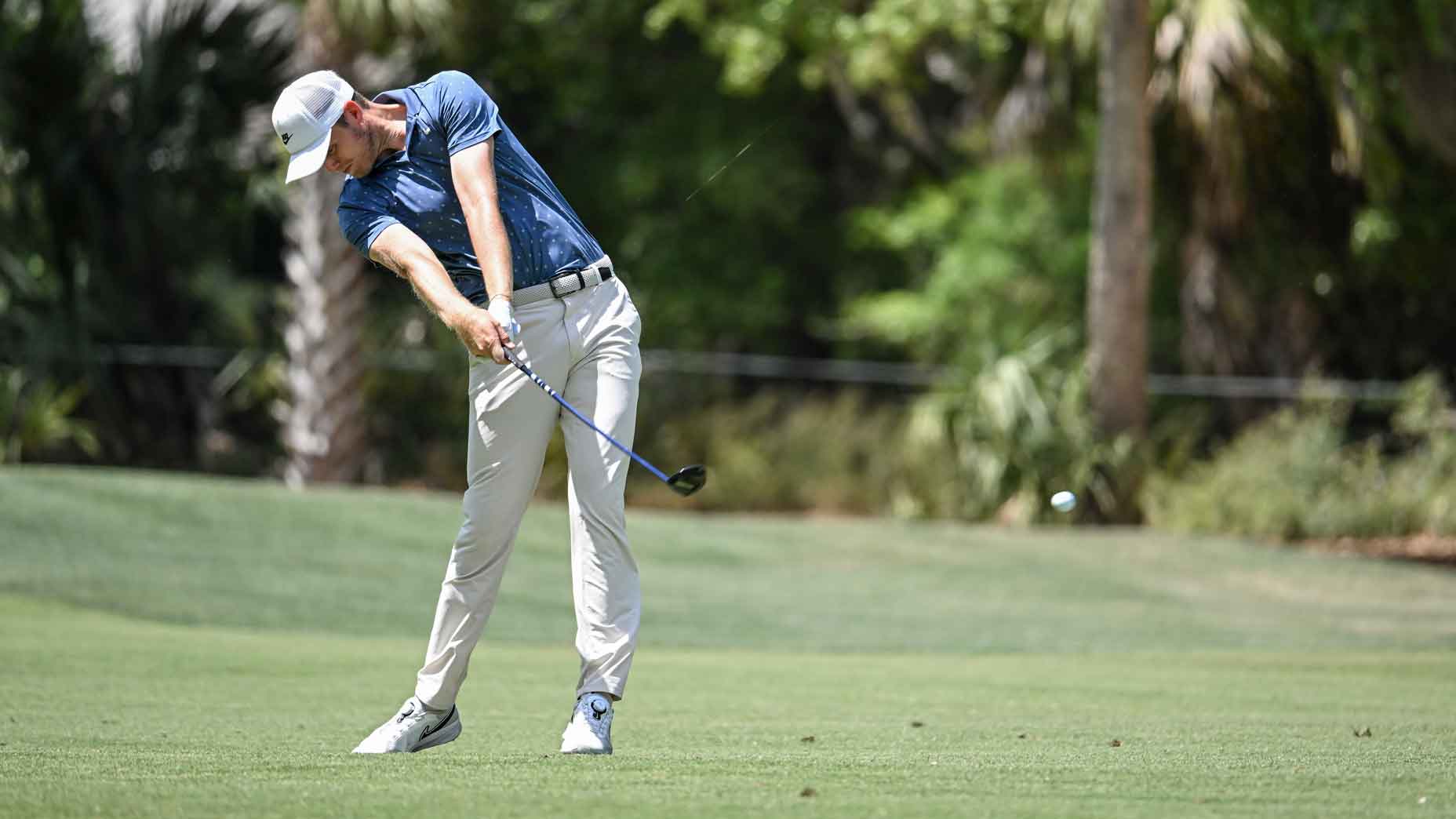He won. I lost. We won. You may win. I’m not sure what that makes everyone’s record here, but let’s continue.
Our game was simple, and it wasn’t. Coworker Tim Reilly and I recently competed in a long game skills challenge. We hit shots from 180, 200 and 220 yards. A month later, we hit them again. In between, we were guided by GOLFTEC.
And therein also lay the difficult part. From deep, Tim and I were coming up short. While we could explain the game to you on this website, we hadn’t necessarily been able to translate it to ourselves. We needed the coaching.
“If you ask anyone who I play golf with regularly what my biggest weakness is, the likely answer is consistency with long irons,” Tim told me. “They have been a guessing game for me for as long as I’ve been playing golf.”
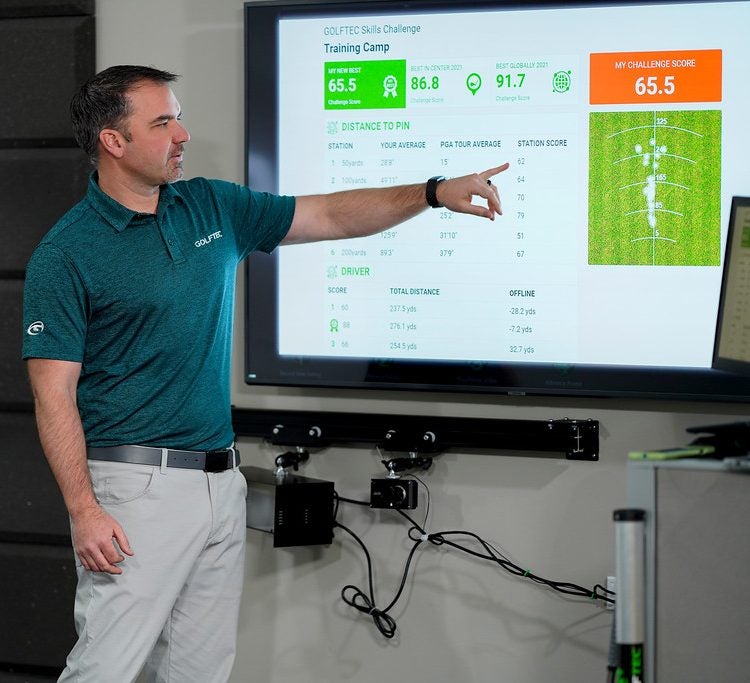
Swing Evaluation for $125
Same here. I actually texted three friends ahead of time to ask what they thought my golf shortcoming was — it’s a *great* question for your golf buddies, by the way — and they all said 5-iron on down, though with a few more adjectives and adverbs. My problem is, I’m a self-taught player, and while that works for some, and to a degree it’s worked for me — I’ve broken 80 a few times — I’ve never quite been able to cobble together a swing to get me home from over 175 yards out. It’s not just one “miss,” either, though usually I bone-stingingly hit it thin.
So we went to work. Here are the particulars: Our contest is the second match-up in a bracket-style competition in which eight GOLF.com staff members are squaring off — with a GOLFTEC coach at our sides — to determine, through cold, hard data, who can improve the most this golf season. (Round 1 features skills challenges in four categories: driving, long game, iron play and short game.)
The rules for our long game clash:
(1) Pair up with a coach at a GOLFTEC location (Tim worked with Dan Benzenberg in Carle Park, N.Y., and I connected with Nick Schiavo in Englewood, N.J.).
I battled my colleague in a driver skills challenge. Here’s how it went and what we learnedBy: Alan Bastable
(2) Take GOLFTEC’s long game challenge, which measures shots from 180, 200 and 220 yards on a launch monitor and spits out a rating based on accuracy (or lack thereof).
(3) Try to improve on that number. Over a series of lessons, we aimed to tack on as much accuracy to our swings as possible, under the tutelage of our coaches. At the end of the regimen, we’d take the long game challenge again. Whoever posted the highest score would advance to Round 2.
Let’s begin. On day one, as coaches Benzenberg and Schiavo monitored on a computer behind us, I scored a 61.9 and Tim a 76.8, and we were debriefed. Benzenberg, Tim said, first addressed his impact position.
“I was, for lack of a better term, ‘flipping’ at the ball and costing myself a lot of power and a lot of inconsistent contact points,” Tim said. “Between that and a combination of body and head sway, I was in poor positions.”
I heard the word sway, too. And words on my grip (“too strong”). And my back (“more ‘S’ curve”). And my feet (“too wide”). And my hips (“no turn”). Oh, and my backswing, downswing and follow-through. Them, too. And this funky “dip.” Visually, think slow-pitch softball swing. Descriptively, think tail wagging the dog — my arms were doing most, if not all, of the work, and the rest of my body was along for the ride.
So what was the fix for Tim?

“First, we worked hard to eliminate the sway in my hips and head,” he said. “I now have a quieter body during my swing. From there, we worked on squaring my clubface more at the point of contact. We went about doing that by hitting a lot of punch shots. I exaggerated the action and feeling as much as possible to get my hands out front more and clubface where it needs to be. This felt like a knockdown shot until the point of feeling natural. That’s what over 1,000 swings like this will do.”
For me, we checked off the easy corrections first — I softened my grip, brought my feet in a few inches and slightly cocked my back up. From there, we spent the next four lessons positioning my hands on the takeaway (“point the butt end of the club at your right hip”), improving my rotation (“turn your right hip inward”), working my wrists on the backswing (“cock them as you rotate”) positioning my legs (“anchor the right leg on the back swing, and the left leg coming through”) and finishing. So a lot.
But to be honest, it was easier done than said. The results were less than desirable; we were both rebuilding and erasing, and neither Rome nor a golf swing can be built in a day. However, when it was right, it was pure. I was putting in less effort and receiving better output. In high school science, that was termed an efficient machine, and I felt like one.
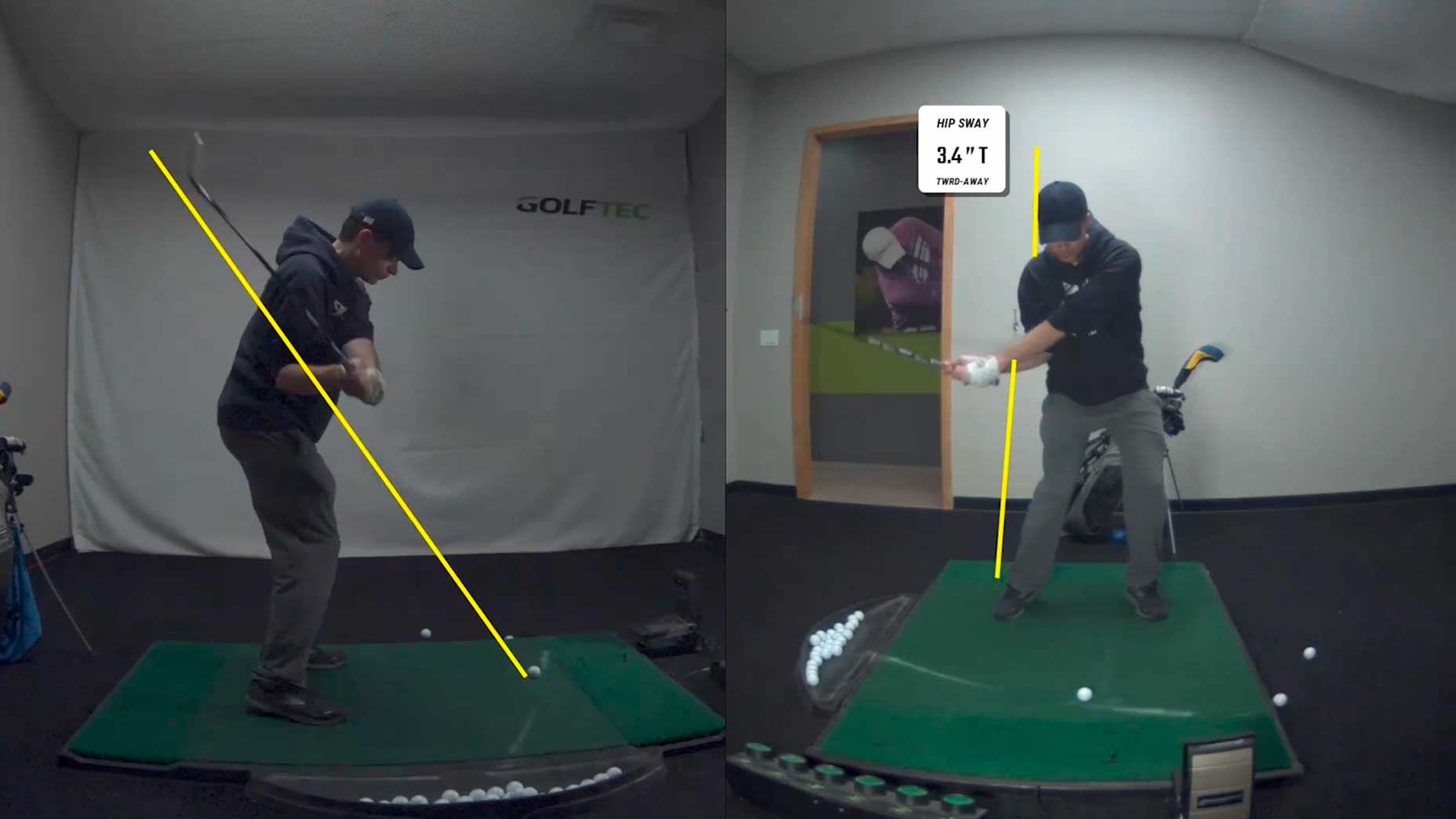
And Tim’s adjustments?
“I’ve gained nearly 15 yards of distance with some of my irons and now I have to take a moment to reassess which club I’m pulling out of my bag,” he said. “The distance gains have been a great stride, and I find myself having a much better idea of what I will do with my long irons. It’s not a complete guessing game anymore.”
And we then competed again. If you read the first paragraph, you know how this ends. Tim won. He scored a 71.8. I scored a 65.8. But, but, but! We both won. And you may win.
Cheesy, yes. But so are pizzas, and who doesn’t like pizza?
We both came out ahead. We are better for having done it. And whatever you can take from that, by all means do.
“The most exciting part is seeing these results and knowing I’m not even all the way there yet,” Tim said.
Good game, champ.


